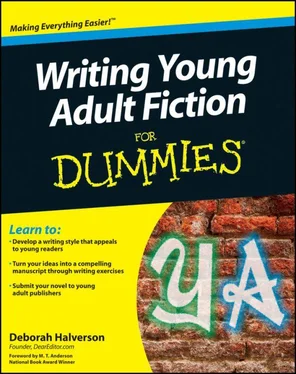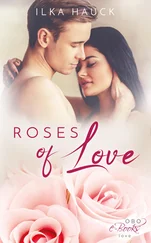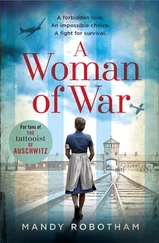The book that changed everything: The Outsiders
“Young adult literature” has only been a formal category since the late 1950s, about the time the American Library Association formed its Young Adult Services Division (now known as the Young Adult Library Services Association, or YALSA). In fact, the term teenager had been widely recognized only the decade before, so it’s understandable that it took a while before writers focused on the angsts and dreams of that new age group.
Prior to that, stories written about kids and childhood were mostly written with adult readers in mind, and the ones written directly for young readers were often thinly veiled morality lessons rather than novels intent on exploring the experiences of that audience. There were notable exceptions like J. D. Salinger’s The Catcher in the Rye , which signaled an interest in the emerging teen psyche in 1951 with its brooding young man caught between the worlds of childhood and adulthood, but otherwise writers had yet to connect with this emerging audience in a collective way. Even when folks did start writing novels with young adults officially in mind, the fledgling category got little respect as anything but fluffy entertainment.
Then came 1967. That year, Viking Press published 17-year-old S. E. Hinton’s The Outsiders , and a gang of greasy no-gooders who smoked, drank, “rumbled,” and knocked up girls totally changed the tone of books written for young people. Young readers finally saw themselves in a book — their own worries, their own interests, their own potential triumphs.
The publication of The Outsiders , with its “real” teens, ushered in the 1970s “issue book” or “problem novel.” This literary phase had authors tackling universal teen problems with fervor. Getting your period, having your first sexual experience, smoking, rape… these books served up social angst galore. And teens gobbled them up. Judy Blume was perhaps the queen of the issue novel, captivating young readers with hits like Forever and Are You There God? It’s Me, Margaret . The topics were big, and the young characters embodied the issues and fought the battles on their own terms. Young adult fiction had come into its own.
Understanding why YA fiction is for kids
Young readers want see themselves in their books, and young adult fiction satisfies that need. Teens get stories that reflect their situations and concerns, and they feel empowered reading about kids their own age who solve their own problems. For young readers who aren’t at the top of the reading spectrum, teen fiction offers reading experiences that respect and welcome them rather than intimidate. Advanced readers who are educated or sophisticated enough for books with adult themes get challenging, inspiring stories about kids their own age. All these readers can learn about our crazy, ugly, wonderful world from the safety of their reading nooks, and kids can immerse themselves in a book to escape the troubles of real life just like adults do. Young adult fiction offers teens stories about themselves and their world.
Every young adult novel is written for a very specific age range, which determines everything from theme to sentence length. I break down those age ranges in detail in Chapter 2, but for now, understand that young adult fiction is actually an umbrella term for two very different publishing categories:
 Middle grade fiction, aimed at kids ages 9 through 14 (also referred to as MG or tween fiction )
Middle grade fiction, aimed at kids ages 9 through 14 (also referred to as MG or tween fiction )
 Young adult fiction, or YA, for teens ages 12 through 17 (also called teen fiction )
Young adult fiction, or YA, for teens ages 12 through 17 (also called teen fiction )
Looking at why it’s not just for kids
Even though young adult fiction’s primary audience is tweens and teens, adult readers get great pleasure from these novels as well. More and more adults are discovering that young adult fiction is more than stories about high school girls who get crushes on high school boys and then teen angst ensues. These novels have edgy storytelling and offbeat humor; they have strong narratives, plot, and characters; and they scrutinize the complex concerns of young people under all sorts of lenses. Above all, they entertain.
In fact, some of the most ardent fans are 21-and-overs. The New York Times reports that 47 percent of 18- to 24-year-old women and 24 percent of same-aged men buy primarily young adult books. The same is the case for one out of five 35- to 44-year-olds. And YA lit book clubs for adults are plentiful. These adults love the timeless themes, they enjoy the trips down memory lane, and they relish the strong storytelling that fills YA fiction. A young adult novel has lessons and entertainment for every age, and the stigma of reading “a kid’s book” has long since disappeared.
 Books with equally strong appeal for young and old readers alike are said to have crossover appeal , meaning they cross over the line that divides the adult and young adult markets.
Books with equally strong appeal for young and old readers alike are said to have crossover appeal , meaning they cross over the line that divides the adult and young adult markets.
The other book that changed everything: Harry Potter and the Sorcerer’s Stone
After deep explorations into teen issues in the 1970s, young adult fiction faltered as the old issue books started feeling stale, safe, and irrelevant to kids of the ’80s. As would happen time and again, the category was about to undergo change. American teen culture was venturing into darker, edgier handling of teen topics, and the market for young adult fiction sagged under the restlessness of the next emerging teen culture.
The mass market teen romance phase of the 1980s was the first real sign that the shift was taking place. There also arose an interest in multicultural stories that reflected the full range of American demographics. But the category didn’t take a solid upswing until the mid-1990s with the publication of a new kind of teen novel that featured edgy, realistic themes. These books mesmerized young readers — and unsettled adults. Complex, compelling, and often experimentally structured novels like Ellen Hopkins’ Crank pulled no punches. They showed life at its grittiest, tackling universal problems from an entirely different aesthetic. This shock-and-awe version of issue books breathed new life into the young adult fiction category. The gloves were off now, and teens responded by opening up their own wallets, for the first time taking the reins in buying paperbacks themselves in mall-based stores.
Still, an upswing is no volcanic eruption. That had to wait for the arrival of a bespectacled young wizard named Harry Potter. No one was prepared for the book that rocked the publishing world. A dozen publishers rejected J. K. Rowling’s Harry Potter and the Philosopher’s Stone before it was finally published in modest numbers in England in 1997 and shortly thereafter in America as Harry Potter and the Sorceror’s Stone . At that point, a publishing phenomenon erupted. Both kids and adults loved the series, taking it to such sales heights that when the seventh and final volume was published in 2007, it sold a record-breaking 8.3 million copies in the first 24 hours. The series became a media empire complete with its own merchandise, movies, and even a theme park. The books were sold in chain stores, mall-based stores, and retail and warehouse stores. Harry Potter was everywhere.
The subsequent publicity boon for all young adult literature was immense. Initially books about wizardry benefitted from the interest the series, but that eventually spilled over into all categories and genres of YA lit. New and reluctant readers had discovered the joy of reading, while kids who’d been readers their whole lives found their interest turning to passion, and older readers rediscovered the world of YA literature. Thanks to Harry Potter, young adult literature reached a new level of mass-media exposure, paving the way for the commercialization that defines today’s young adult fiction marketplace.
Читать дальше
Конец ознакомительного отрывка
Купить книгу

 Middle grade fiction, aimed at kids ages 9 through 14 (also referred to as MG or tween fiction )
Middle grade fiction, aimed at kids ages 9 through 14 (also referred to as MG or tween fiction ) Books with equally strong appeal for young and old readers alike are said to have crossover appeal , meaning they cross over the line that divides the adult and young adult markets.
Books with equally strong appeal for young and old readers alike are said to have crossover appeal , meaning they cross over the line that divides the adult and young adult markets.










